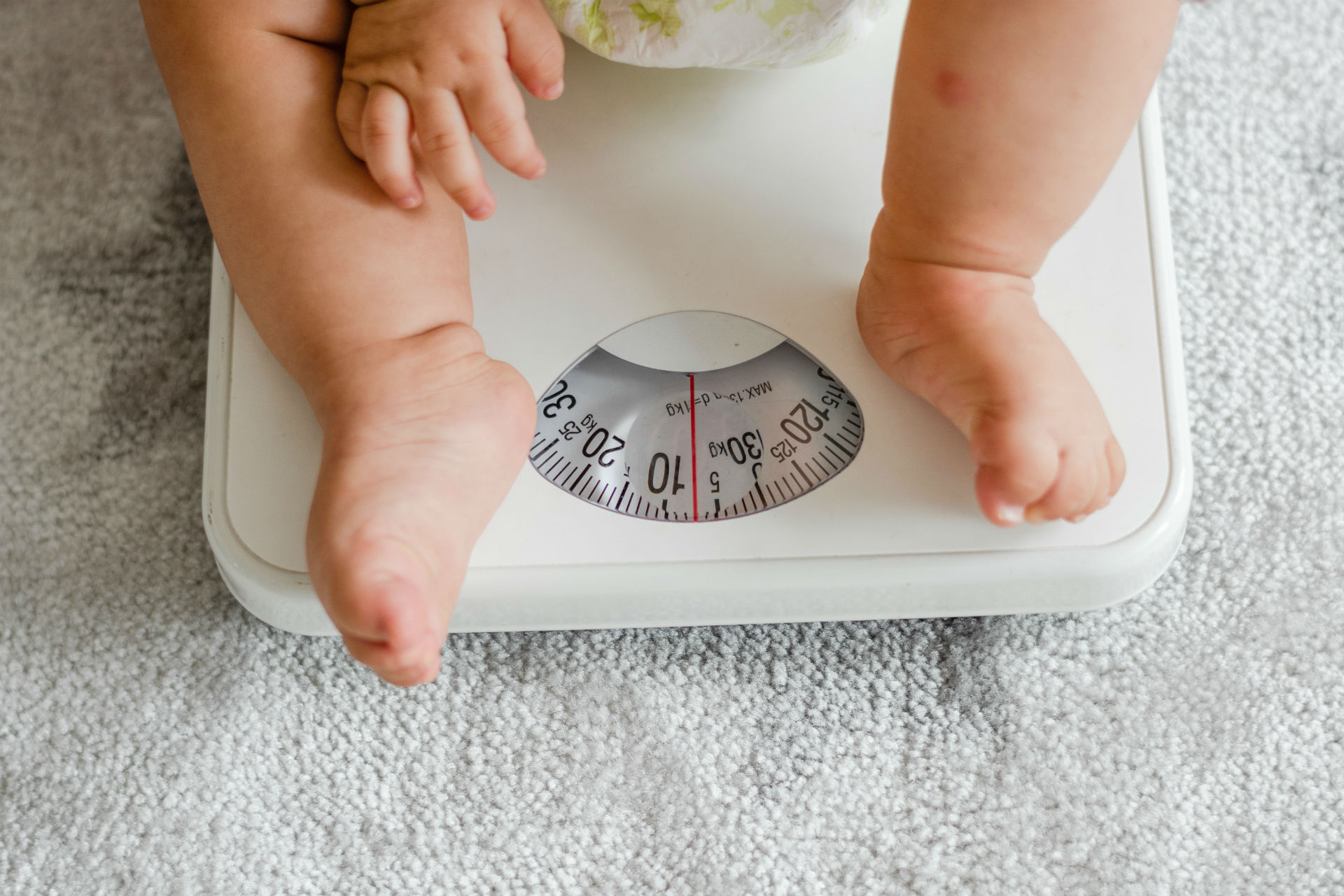Baby
4 min Read
Is there a ‘normal’ weight for babies?

January 9, 2020
Baby
4 min Read

January 9, 2020

My son was a cry baby, literally. In the early weeks of his life, he cried—nay, wailed, screeched, howled—so much that my health care worker concluded he must be hungry. It being England, she said, “Maybe the wee lad needs a wee bit more to eat.” And me being a first-time mom, in a foreign land to boot, I deferred to her advice.
Because I wasn’t able to breastfeed successfully, a special formula for my insatiable baby boy was recommended.
And eat he did.
Over the weeks, more skin folds and dimples and appeared. My baby went from being plump and deliciously chubby to downright portly. Months later, we moved to Canada. We introduced solids and, like England itself, the specialized, protein-packed infant formula was a thing of the past.
But the damage, so to speak, was done. People stared when I took my little guy to the library or supermarket. One pensioner even waved his cane disapprovingly as he glanced inside the stroller.
Sumo baby. Little Buddha. We heard it all.
In fact, I hardly took much notice until I signed him up to a baby gym class in our neighbourhood. While the other babes navigated the obstacle course with ease, my little pork chop didn’t move a muscle (assuming there was muscle hiding under the rolls of jelly). He refused to crawl or even bum shuffle. Instead, he sat contentedly under a parachute listening to the playful singsong.
The instructor was having none of it, and I felt myself shrink under the heat of her stink-eye. Just crawl, dammit, I urged him under my breath. To no avail. On many occasions, I emerged from the building, crimson-cheeked from a mix of humiliation and defeat.
Then it dawned on me: the instructor was fat-shaming my baby!
True to his nature, shortly after his first birthday, my son got on his stubby feet and walked, bypassing crawling altogether. Six years later, that instructor would scarcely recognize him. Like the blob of Play Doh that is stretched and rolled into a long, lithe snake, my son is now a shadow of his former, fat baby self.
Good thing we saved the photos.
Of course some parents—like Amy Bielby—have the opposite problem. “My kiddo was born nine weeks early, so was—and is—a very skinny kid. I actually had a woman tell my sister, ‘Your sister’s child is too small. I think she is malnourished.’”
So it begs the question: Is there a ‘normal’ weight for babies? It’s not that simple, says Dr. Dina Kulik, a mom of three and pediatrician at Toronto’s Sick Kids Hospital.
“The normal weight for babies is variable with a large range as per the growth chart,” says Dr. Kulik. “I become concerned when a baby is too high or low on the growth chart for their respective height.”
For example, taller infants like my son may tip the scales while those born prematurely, as in Amy’s case, may weigh in lower. In fact, so many factors can affect size that it’s impossible, not to mention unadvisable, to make sweeping assumptions just from looking at a baby.
Dr. Kulik advises parents who are concerned about growth to visit their doctor in between well-baby visits. In most cases, there is nothing to fret about as long as the infant is eating well and producing a sufficient number of wet and soiled diapers.
Aside from your pediatrician, everybody else should politely mind their Ps and Qs.
Originally published in September 2015.